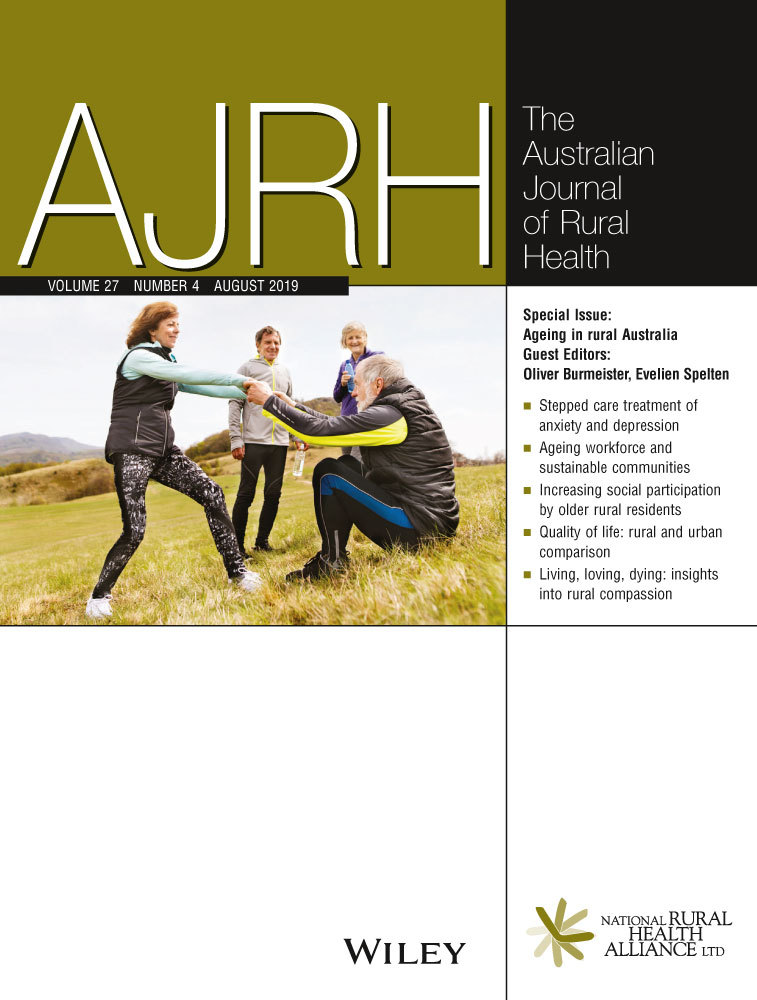The change in quality of life for older Australians: A rural and urban comparison
Abstract
Objective
To assess the quality of life of older Australians living in rural and urban communities over time.
Design
Panel survey conducted in 2012-2013 and 2014-2015.
Setting
Participants lived in metropolitan Melbourne (urban sample, N = 279), rural Victoria (N = 98) or Tasmania (N = 47).
Participants
All participants (N = 424) were clients of aged care providers or residents in retirement housing or residential care.
Main outcome measures
Quality of life.
Result
A repeated-measures analysis of variance showed a decrease in quality of life over time. There was no difference in change in quality of life over time by location of participants (urban vs rural). Multiple regression analysis showed that resilience predicted baseline quality of life in all three locations.
Conclusion
These findings generally did not support significant differences between geographic locations in trajectories of older adults' quality of life over time. Instead, individuals' resilience appears to be the strongest predictor of quality of life.




